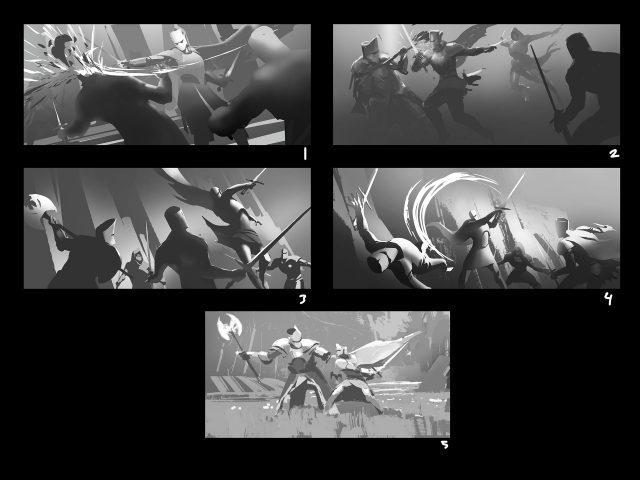Motion = Emotion
So what can we learn from Instructed Motion when it comes to XR design?
Well, it’s clear that certain motions can be fun, but beyond fun, certain motions can make players feel a certain way—like being able to add flavor to their experience.
Take for example the beat map in the track Radioactive. The motions in this song are these huge punchy hits that really speak to the song’s powerful lyrics. And there’s one part where you fling your hands way up in the air right as there’s a break in the music and the singer takes a deep breath—a motion that makes you feel perfectly in tune with that moment in the song.
On the other hand, the beat map of Harder, Better, Faster, Stronger literally makes you move with robotic motions, which perfectly aligns with both the tone and theme of the song.
Intentionally making players move in these unique ways makes these beat maps feel completely unique from one another by making the player experience different feelings while they play.
This connection between specific motions and how they make players feel means you can even think of Instructed Motion as Instructed Emotion.
But how can you apply this to games that don’t have anything to do with music?
Rather than starting by building out a world and filling it with objects and enemies and then figuring out exactly how players will interact with those things, my recommendation is—before you do anything else—sit down and come up with an idea of how you want your players to feel—like a specific set of emotions you want them to experience.
Once you have that feeling locked down, you can experiment with motions and interactions that encourage that emotion.
This is exactly how Schell Games approached the development of Until You Fall.

Until You Fall Producer Kirsten Rispin told me the studio built the game around the idea of making players feel like a “sword god.” Specifically, she said the team honed in on the words “powerful, strong, and smart” for how they wanted players to feel while they played.
But how do you build a combat system that creates those feelings? Instructed Motion was the key.
Until You Fall Art Director Justin DeVore told me the team worked hard to “choreograph the combat to feel powerful and complex.”
“We tried to design poses that would pop onto the screen in ways that felt good. If we put a block angle in one direction, we want to make sure the next angle will make it feel cool to have moved to that new position. And so there was a lot of iteration and back and forth on making sure the choreography of the Instructed Motion mechanics delivered the ‘Sword God’ feeling we were chasing.”
While many of the game’s Instructed Motion mechanics use explicit visual indicators, some of the mechanics that make players feel powerful are more subtle. For example, the way you pick your reward at the end of each stage by crushing it in your hand.
It would have been much easier to use a laser pointer to select the reward from a menu screen, but this simple motion absolutely contributes to the feeling of being powerful within the game.
So, as the final takeaway: making the most of Instructed Motion means matching the motions—and thus the emotions—to the fantasy you want to deliver.
If you’re making a horror game, the player should feel scared. If you’re making a stealth game, the player should feel skilled and sneaky. And if you’re making an action game, the player should feel capable and deadly. So spend time thinking about what motions can contribute to the particular feelings that your game wants to deliver to players.
– – — – –
If you want to see how Until You Fall delivers the feeling of being a Sword God, you can find it on Quest, PC VR, PSVR, and PSVR 2.
Enjoyed this breakdown? Check out the rest of our Inside XR Design series and our Insights & Artwork series.
And if you’re still reading, how about dropping a comment to let us know which game or app you think we should cover next?






